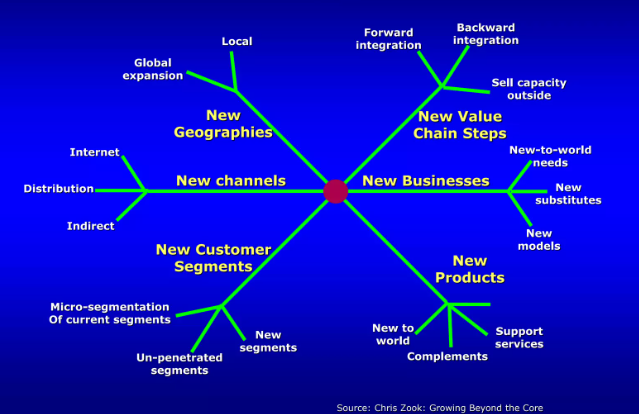Strategic Pursuit: Why Focus on a Particular Market Sector
The decision to chase a specific market sector is one that can define the trajectory of an organisation’s growth. Success in account management and market strategy hinges on understanding why a market sector aligns with your business goals, capabilities, and customer expectations. This article explores the importance of sector targeting and its connections to risk, strategy, and growth.
Why Market Sector Matters
Focusing on a market sector allows businesses to:
Leverage Expertise: Specializing in a particular market enables companies to refine their offerings, positioning themselves as thought leaders and trusted advisors.
Maximize Efficiency: Concentrating resources on a defined sector ensures efforts are streamlined, minimizing operational inefficiencies.
Enhance Relationships: Sector focus fosters deeper, more strategic partnerships with clients who share alignment in goals and values.
The Role of Adjacencies in Strategic Growth
Chris Zook’s Beyond the Core provides a compelling framework for pursuing adjacent market opportunities as a strategic pathway for growth. Zook argues that adjacency moves—expanding into related areas such as complementary service and product lines, new customer segments, or innovative distribution channels—are less risky and more likely to succeed than ventures into unrelated diversification. For companies focused on key account management, this approach is particularly relevant.
In key account management, understanding the full potential of the customer supply chain involves identifying opportunities to serve clients in adjacent markets. This may include offering new services tailored to their evolving needs, introducing solutions that address gaps in their operations, or partnering on collaborative innovations. For example, if a key account relies on your organisation for critical supply chain services, adjacent opportunities could involve consulting on supply chain optimisation or developing specialized technical solutions.
The Value of Key Account planning in expansion
In key account management, understanding the full potential of the customer supply chain involves identifying opportunities to serve clients in adjacent markets. This may include offering new services tailored to their evolving needs, introducing solutions that address gaps in their operations, or partnering on collaborative innovations. For example, if a key account relies on your organisation for critical supply chain services, adjacent opportunities could involve consulting on supply chain optimisation or developing specialized technical solutions.
Zook’s concept of "relentless repeatability"—the systematic pursuit of adjacencies—can be applied to account planning to ensure consistent and sustainable growth. By leveraging core capabilities and aligning them with adjacent opportunities, organizations can transition from being a “safe pair of hands” to becoming trusted innovators and strategic partners.
Identifying the Right Market Sector
The key to pursuing a sector lies in understanding how it connects with your business. Some indicators of an ideal market sector include:
A genuine need for your products/services: The market recognises and values what your organisation brings to the table.
Cultural alignment: Shared principles and business ethics ensure smoother collaboration.
Opportunity for growth: The sector presents untapped potential and adjacent markets.
Risks in Targeting a Sector
As you commit to a market sector, you must assess and mitigate risks such as:
Market Saturation: Is the sector overcrowded, limiting your chances of advancing your difference?
Economic Factors: Does the sector have exposure to financial volatility?
ESG Challenges: Environmental, social, and governance factors are increasingly influential in shaping market dynamics.
Strategies for Sector Pursuit
Success in targeting a market sector is deeply tied to strategy. Here’s how:
Pipeline and CRM Integration: These tools help map opportunities and track progress within a chosen sector.
Clear Account Plans: Defined, concise plans ensure alignment between teams and reinforce trust with key clients.
Risk Plans and Feedback Loops: Engaging with clients to identify risks and gather feedback builds credibility and positions your organisation as proactive.
With consideration of what Chris Zooks details in relentless reliability, Diana Woodburn echoes this with commentary in her work Key Account Management: the Definitive Guide, emphasizing that failure in key account management often stems from a lack of focus on the market and customer needs. She argues that organisations claiming to practice key account management frequently fall short due to poorly defined processes and an inability to prioritise strategic accounts effectively. Woodburn highlights that successful key account management requires a clear understanding of customer categorisation, relationship stages, and the alignment of organisational goals with customer expectations. Without this focus, businesses risk losing competitive advantage and failing to build profitable, long-term relationships
Conclusion
Chasing a particular market sector is more than just a strategic decision—it’s a commitment to understanding the nuances of the sector and delivering unmatched value.
Focused sector targeting transforms relationships, mitigates risks, and drives sustainable growth. Ultimately, meticulous planning, aligned execution, and constant adaptation are the cornerstones of success in any market. The success in pursuit of market comes from the relentless repeatability of addressing the market, but balance with the supplier perception that you provide the safe pair of hands.
In planning and taking time to challenge the reason you exist in a market sector the business can monitor and understand the need to use outside sources to challenge the management view of the metrics for success.

